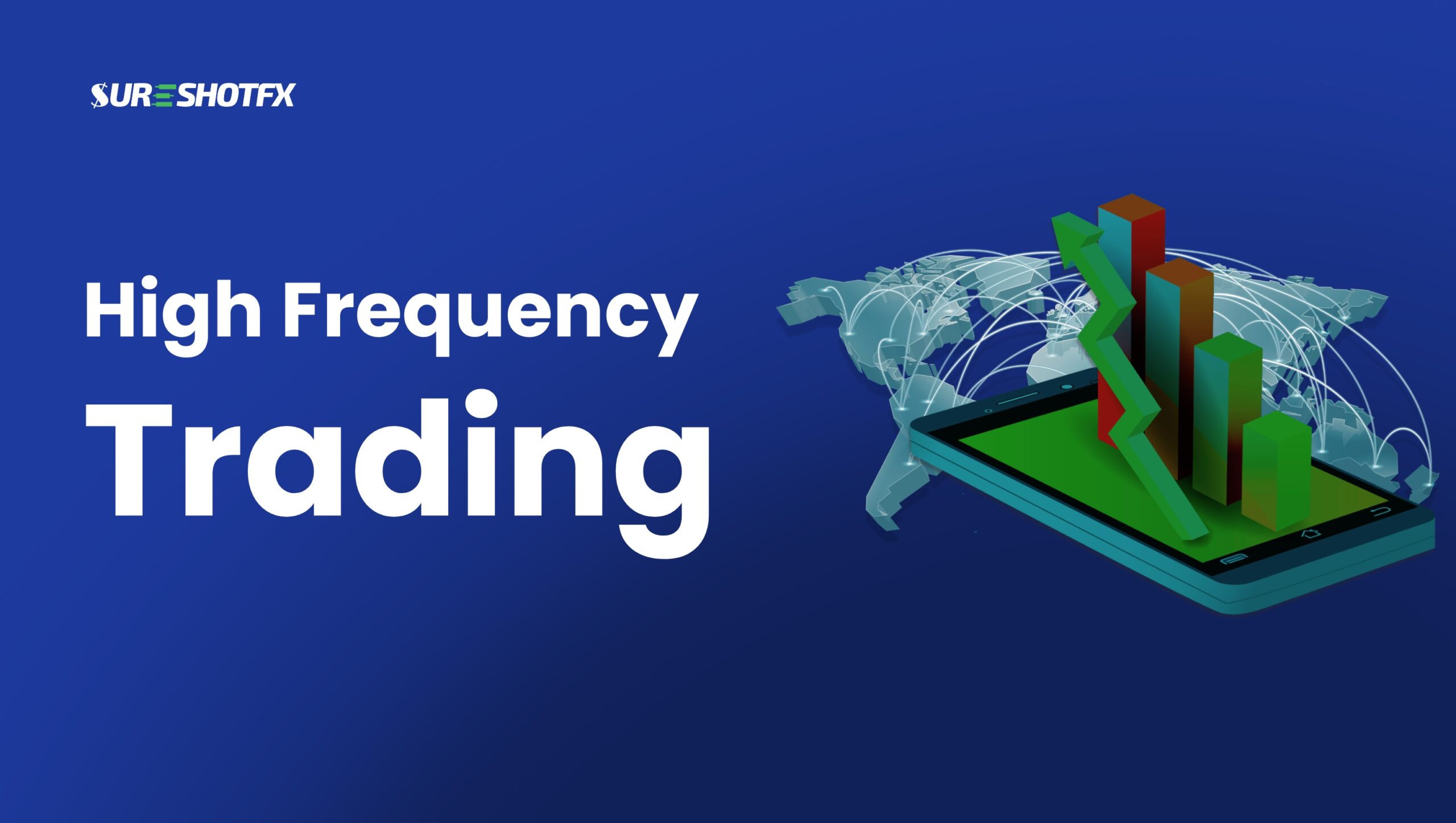What is High Frequency Trading: How to Balance Speed and Risk?

You may have come across the term “High Frequency Trading” a few times and wondered what high frequency trading is? And how others are using high frequency trading in forex trading. High frequency trading algorithms are taking advantage of fleeting market opportunities and tiny price fluctuations across global exchanges in the literal blink of an eye.
With almost half of all US stock trades being made through high frequency automated trading, it has completely transformed the financial markets. So, how has it changed the forex industry, and what does the future have in store?
So, buckle up as we explore this frequently heated topic, revealing its basic tenets, strategies, and effects on the forex market.
What is High Frequency Trading?
High frequency trading (HFT) is a method of trading large volumes of stocks, derivatives, currencies, and other financial instruments across global markets by using proficient interpreting technologies. HFT firms analyze market data as well as place and execute orders in milliseconds thanks to advanced technologies.
Their algorithms are able to swiftly trade on even tiniest price variation or pending orders. In order to reduce risk, it then quickly loosens possessions or by the close of the trading session. In order to profit from the bid-ask spread or market making, a popular HFT approach, requires continuously supplying buy and sell orders to the market.
By utilizing price differences between multiple marketplaces or exchanges, trade aims to maintain price stability. Furthermore, news-driven trading algorithms search through headlines and respond with remarkable speed in real time to events that move the market.
The Magic Formula of HFT:
The traditional “buy low, sell high” strategy has been substituted by High frequency trading. Any HFT strategy or trading bot is able to identify an undervalued product in a highly competitive marketplace and profit from it before anybody else does. In order to do this, HFT depends on three essential components:
- Speed: Owing to fast connections and close accessibility to exchanges, HFT transacts in milliseconds rather than seconds or minutes. Even the swiftest human trader is left behind when trades are executed practically instantly.
- Algorithmic Expertise: Advanced algorithms function as the company’s brains, analyzing huge amounts of data and identifying promising possibilities at a rate that makes sense.
- Success-Oriented Strategy: Although the fundamental idea is still the same—taking advantage of micro-opportunities—HFT uses a variety of methods. While some operate as market makers, guaranteeing continuous buying and selling, others use arbitrage to look for differences in prices between exchanges. Each is competing for a slice of the pie: liquidity detection spots peaks in trading activity, while news-based trading responds to announcements in real time.
The Great HFT Debate – Risks vs Rewards
With high frequency trading now making up more than 70% of equities trades in US markets, it is evident that the game has changed. However, there is much disagreement over whether its benefits outweigh any drawbacks.
Supporters contend that it offers ample liquidity and tighter spreads. However, some argue that it unfairly favors those who benefit from advanced algorithms, increasing volatility and intensifying situations like the 2010 Flash Crash. Questions arise over dropped transparency and market-rigging strategies owing to the failure of regulatory frameworks to keep up with the times. HFT is a two-edged tool that causes a lot of controversy:
Pros:
- Increased Liquidity: By guaranteeing continuous buying and selling, market makers facilitate trade for all parties involved.
- Tighter Spreads: As HFT firms compete more, spreads may get tighter, which might be advantageous to all traders.
- Price Efficiency: Faster execution and constant analysis can lead to more efficient price discovery.
- Reduced Fees: Because HFT has tightened the spreads between purchase and sale prices, ordinary investors have experienced a decrease in fees.
Cons:
- Unfair Advantage: HFT companies with better technology, according to critics, have an unfair advantage over amateur traders.
- Market Volatility: High frequency trading has the power to boost changes in the market, resulting in rapid price fluctuations and even crashes.
- Open-ness Issues: Because HFT is so quick and complicated, there are issues with openness and possible manipulation.
Strategies That Fuel HFT:
- Market Making: By regularly buying and selling, these “market helpers” maintain constant liquidity, ensuring easy trading for all parties. Think of them as the common shops in a bazaar that provide opportunities for both purchasing and selling.
- Arbitrage: These individuals, referred to as “opportunists,” take advantage of minute price variations across various exchanges. Imagine finding a more affordable item at a nearby store and taking advantage of the price difference.
- Statistical Arbitrage: This strategy looks for patterns and connections in market data and uses precise computations to take advantage of expected price changes. Consider employing sophisticated data analysis to identify trends that are hidden from view.
- High-Frequency Traders: The “trend riders” profit on minute changes in market prices by purchasing at rising prices and selling at falling ones. Think of surfing a wave as it peaks, riding the momentum for a quick profit.
- News-Based Trading: They respond to news announcements in real time and predict how they will affect currency values. News traders usually trade during news hours and scalp to make higher return.
Problem: Information Gap
The information imbalance between HFT corporations and individual hedge traders presents a further challenge. Innovative technologies and advanced data analysis are used by these companies to find and grasp micro-opportunities which are not readily apparent to the regular trader. Because HFT bots have lightning-fast reactions, individual traders may find it challenging to compete with their lack of access to real-time data and complicated algorithms.
High frequency trading by larger institutions can make trading for small or retail trader difficult. Additionally, many retail forex broker will not allow you high frequency trading and can terminate your trading account. So, we would suggest you stick to standard forex trading for retail forex traders. With your decent amount of trading balance, you can easily get a good amount of return.
You can always check out SureShotFX services and copy trades from forex trade experts.
The Final Word
While the entire effect of HFT on individual traders is unknown, the future is likely to bring both challenges and opportunities. By staying informed, adapting approaches, and utilizing readily accessible technology, traders can survive the ever-changing market and potentially profit from the transforming face of forex.
However, it is crucial to recognize the inherent risks and difficulties of trading, as well as approach it with caution and expertise. And, despite regulatory efforts to limit potential dangers, expanding across financial centers is unavoidable given the unquestionable economic advantage it gives.


